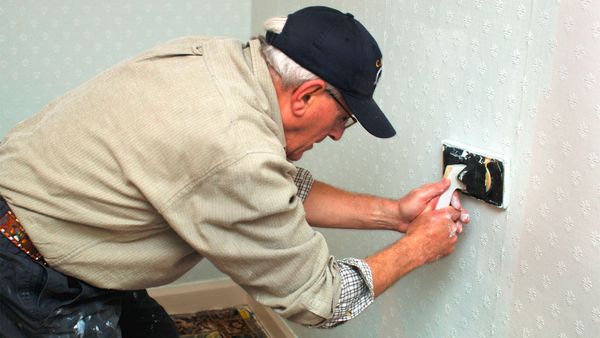Stains come in all shapes, sizes and sources. From yellow nicotine film to a water stain from a leaky faucet or roof, there's something dastardly about how easily stucco and drywall can discolor. Wood can be problematical, too. Stained wood can be difficult to cover and a real challenge if the surface has been varnished.
On stained, varnished or very dirty walls, paint has a tendency to not stick, so a good pretreatment may be necessary. For paint to stick, the walls have to be clean. In the case of nicotine stained walls, that means a thorough going over with a strong cleanser and degreasing agent. The chemical residue in layers of cigarette smoke can be tough to tackle, but TSP (trisodium phosphate) or ammonia are both effective.
Once the smell and most of the yellow are gone and the wall has had time to dry thoroughly over a day or two, prime and paint as you would normally. Enamel paints and primers (oil based) can be a hassle to work with, but offer great coverage. They also create a barrier between the old and new paint, eliminating much of the potential for bleed through. If there's still a smoker present in the home, oil based paint is washable, too.
When dealing with water stains, there are a couple of issues that need to be addressed before painting. The first is mold growth. Mold doesn't always develop on damp walls. It doesn't take much moisture to leave a stain, though. When mold does develop, it can be a health issue, so painting over it isn't an option until you know the mold is dead. For small areas, kill mold colonies with chlorine bleach. If the discolored area is larger than 3feet by 3 feet and you see black, gray, white, yellow or green discoloration that smells moldy and looks rough, cottony or velvety, don't try to deal with the problem yourself. Call a mold inspection expert. If the spot is small, smells clean (not moldy) and looks discolored but only by water, make sure it's dry before trying to paint over it. It's also a good idea to find and deal with the source of the leak before trying to repaint [source: Florida Department of Health].
Because water spots are dark, they need heavy coverage. There are specialty paints and primers on the market that offer the dense coverage necessary to keep water stains from ghosting through reapplied paint layers. If the spot is small, you can also try multiple layers of conventional primer and paint. When applying paint to water stains, bits of old paint and plaster will typically flake off. If you aren't dealing with a textured surface, brush off as much loose material as possible and replaster if necessary before repainting.
Stained wood walls and doors are typically dark and can be so smooth (or varnished, lacquered or enameled) that paint won't adhere. To prep wood stained walls, sand the surface lightly with fine grit sandpaper (80 to 100 level). Once sanded and thoroughly cleaned (the process creates a lot of dust), the surface can be primed and painted relatively easily with oil based as well as some latex paints. Depending on the color of the wood stain, the process may take multiple coats of paint [source: Coleman].


